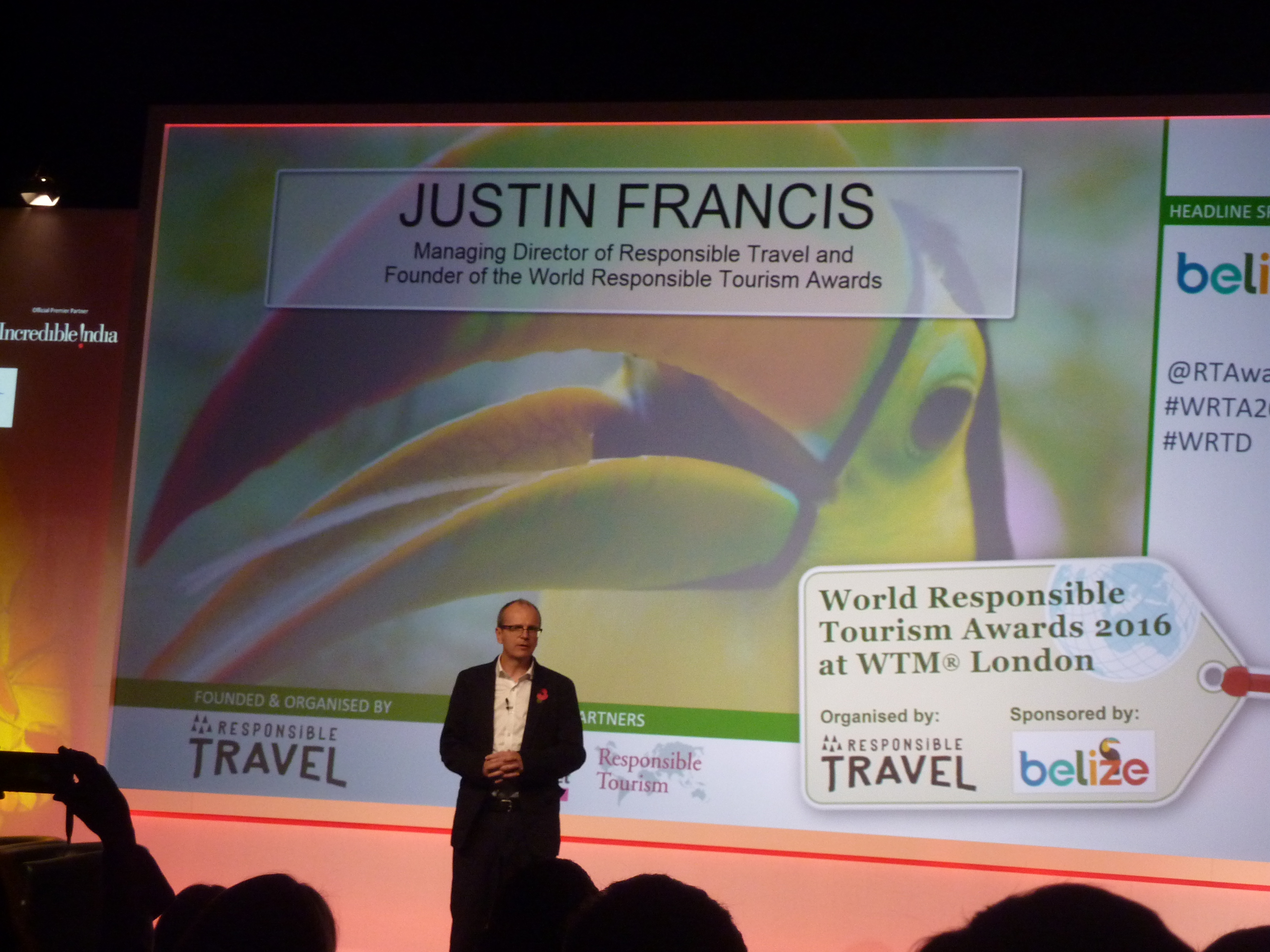Yesterday was the tenth World Responsible Tourism Day, celebrated at the World Travel Market in London, but also now recognized globally. The anniversary was seen as a way to take stock, and look at what progress has been made over the last decade(s) and what remains to be done. On both counts, the verdict is ‘a lot’. We have gone from the situation 20 years ago when most people in the industry didn’t know what was meant by responsible or sustainable tourism, to the idea of sustainability becoming an integral part of the business practices of many tourism companies. But with tourism also now at unprecedented levels and forecast to double in size again within the next 20 years, making the industry sustainable in an era when many destinations are already overcrowded and facing great social and environmental impacts, is still an enormous challenge.
The day opened at the WTM with a presentation by UNWTO Secretary-General Taleb Rifai and then a Roundtable Interview with some of the responsible tourism movement’s pioneers, ahead of the annual Responsible Tourism Awards. In his opening address, Taleb Rifai talked about tourism’s inclusion in three of the Sustainable Development Goals adopted in 2015, and how the tourism industry has to work together in four main areas to ensure that it can contribute to the achievement of these goals. These are:
1. Monitor tourism impact on the ground, through mechanisms such as the UNWTO Sustainable Tourism Observatories
2. Apply the Global Code of Ethics in Tourism
3. Raise awareness among travellers as to how they can respect their surroundings to get a more rewarding travel experience
4. Invest in innovation
The progress over the last 20 years was summed up by Justin Francis, CEO of Responsibletravel.com and founder of the annual World Responsible Tourism Awards. “We have moved from no one knowing what Responsible Tourism was, to people saying they can’t do anything about it, to people asking me to tell them what to do, to now people saying ‘let me show you what we do’,” he explained.
Jane Asher, Director of Sustainable Development, TUI Group, put the compelling business case for sustainability. While many companies see responsible and sustainable tourism practices as a way of cutting costs through more efficient use of resources such as water and energy, she said that customer satisfaction was also measurably higher in sustainably certified hotels, and when more authentic, local experiences are included in holidays.
Both in the panel discussion and in sessions later in the day, Harold Goodwin said that the next big need for change is in destinations. Outbound operators, and many individual businesses such as those recognized in the World Responsible Tourism Awards, have made great strides in making their business practices more responsible, and providing examples of best practice that can be adopted by others. But even the biggest companies are not large enough to change the industry, and it is now destinations that need to take the lead in ’making tourism better’ for everyone, including the consumers on who the travel industry ultimately depends.
The importance of destinations was returned to in the afternoon by Doug Lansky, giving a keynote address on destinations and responsible tourism. He pointed out that DMOs have been very successful in marketing their destinations, but have done much less to manage them, and ensure that the product actually delivered is a good one for consumers who are then visiting in often overwhelming numbers. Destinations from Dubrovnic to Cinque Terre are now looking a carrying capacity and seeking to limit numbers – for example with a ticketing system at Cinque Terre – to try and ensure that the consumer experience lives up to the brand promise and marketing message. He looked at the relationship between numbers of local residents and tourists, and how in some places such as the centre of Venice, the ratio of tourists to locals can be higher than that in resorts such as Disneyland. A possible approach to manage visitor flow and reduce overcrowding is through determining the optimum carrying capacity for a resort or attraction, and managing it through better information provision and timed ticketing. Technology and information sharing could lead to an approach where someone booking a flight to a destination could be alerted if some of the key attractions were fully booked, and offered alternative dates when the most popular museums and tourist sites still had available capacity. In this way, the tourism experience could be protected, and destinations benefit from diverting visitors from times when there were already too many people to shoulder seasons when businesses could benefit at times when currently their income would be falling.
Venice, Barcelona, Cinque Terre, and key global attractions such as the Eiffel Tower in Paris and China’s Great Wall, are all examples of where overwhelming numbers of tourists are either generating a backlash from locals who see their quality of life being eroded, or where tourists are left with a memory of standing in queues or suffocating in crowds rather than of seeing a wonderful sight. But there are also many positive examples of companies and destinations who are adopting their business models to benefit all tourism stakeholders, from the tour operator to the destination and the travellers themselves. The next 10 years of responsible tourism development needs to go from talking about ‘sustainable tourism’ as one part of the overall industry, to just being able to talk about ‘tourism’ with sustainability being taken for granted. But we have a long way to go!
Subscribers to Leisure Tourism have access to academic literature, full text eBooks, and many full text journal articles and conference papers on responsible tourism and sustainability. We also provide hundreds of open-access news updates and analyses of the topic. Start with the search "sustainable tourism" OR "responsible tourism": all search results are available to subscribers, while the news articles can be read by everyone.

